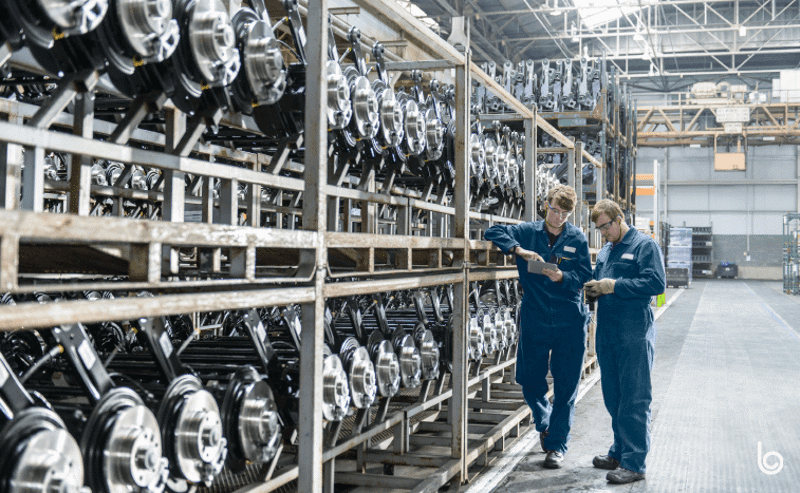The Supply Chain Challenges of the Automotive Industry

The automotive industry is a complex and multifaceted sector that relies heavily on an intricate web of suppliers and logistics to function efficiently. The supply chain for automobiles is one of the most sophisticated and expansive networks in the manufacturing world, involving the procurement, production, and distribution of thousands of components from all corners of the globe. However, this complexity also makes the industry particularly susceptible to disruptions and challenges. Over recent years, several key factors have emerged that highlight the significant supply chain challenges faced by the automotive industry.
Globalization and Geopolitical Risks
One of the primary challenges in the automotive supply chain is its heavy reliance on globalization. Automotive manufacturers source components from a multitude of countries, which can lead to vulnerabilities when geopolitical tensions rise. Trade wars, tariffs, and sanctions can disrupt the flow of parts and raw materials, leading to delays and increased costs. For example, the trade tensions between the United States and China have resulted in increased tariffs on automotive parts, impacting manufacturers’ costs and production schedules.
COVID-19 Pandemic Disruptions
The COVID-19 pandemic exposed and exacerbated existing weaknesses in the automotive supply chain. Factory shutdowns, labor shortages, and transportation restrictions led to significant delays in the production and delivery of vehicles and parts. The sudden and unpredictable nature of the pandemic forced manufacturers to reassess their supply chain strategies, highlighting the need for greater flexibility and resilience. Many companies faced severe shortages of critical components, such as semiconductors, which brought production lines to a halt and delayed the release of new models. To further enhance supply chain resilience, many automotive manufacturers are expanding efficient national warehousing capabilities to reduce dependency on international logistics.
Semiconductor Shortages
The semiconductor shortage has been one of the most prominent supply chain challenges in recent years. Semiconductors are essential components in modern vehicles, powering everything from infotainment systems to advanced driver-assistance features. The surge in demand for electronics during the pandemic, coupled with supply chain disruptions, led to a global shortage of these crucial chips. Automotive manufacturers were forced to cut production, delay launches, and in some cases, deliver vehicles without certain features. This shortage underscored the industry’s dependence on a small number of semiconductor suppliers and the need to diversify sources and invest in more resilient supply chain strategies.
Raw Material Scarcity and Price Volatility
The automotive industry is also grappling with the scarcity and price volatility of raw materials. Metals such as aluminum, steel, and lithium are critical for vehicle manufacturing, especially with the increasing production of electric vehicles (EVs). The growing demand for EVs has led to a surge in demand for these raw materials, causing supply shortages and price increases. Additionally, environmental regulations and sustainability concerns have put pressure on the industry to source these materials responsibly, further complicating the supply chain dynamics.
Environmental and Regulatory Pressures
Environmental regulations and sustainability initiatives present another layer of complexity to the automotive supply chain. Governments worldwide are imposing stricter emissions standards and encouraging the transition to electric and hybrid vehicles. While these initiatives are crucial for reducing the industry’s environmental impact, they also require manufacturers to overhaul their supply chains. This includes securing new sources of raw materials, investing in new technologies, and ensuring compliance with a myriad of regulations across different regions. The transition to greener technologies also demands significant investment in research and development, further straining the financial resources of automotive companies.
Logistics and Transportation Challenges
The transportation and logistics aspect of the automotive supply chain is fraught with challenges. The just-in-time (JIT) manufacturing model, which aims to reduce inventory costs by receiving goods only as they are needed, relies heavily on efficient and predictable transportation networks. However, disruptions in logistics, such as port congestion, labor strikes, and natural disasters, can cause significant delays. The automotive industry’s global nature means that any disruption in one part of the world can have a ripple effect throughout the entire supply chain. The COVID-19 pandemic highlighted the fragility of JIT systems, prompting many manufacturers to reconsider their reliance on this model and explore alternative strategies such as increasing safety stock or diversifying suppliers.
Technological Advancements and Integration
Technological advancements are rapidly transforming the automotive supply chain, bringing both opportunities and challenges. The integration of digital technologies, such as the Internet of Things (IoT), artificial intelligence (AI), and blockchain, can enhance transparency, traceability, and efficiency. These technologies enable real-time tracking of parts, predictive maintenance, and better demand forecasting. However, implementing these technologies requires significant investment and poses cybersecurity risks. Automotive manufacturers must balance the benefits of technological integration with the potential risks and costs associated with adopting new systems.
In conclusion, the supply chain challenges of the automotive industry are multifaceted and require a comprehensive approach to address. By understanding and proactively managing these challenges, manufacturers can build more resilient, flexible, and sustainable supply chains that can withstand future disruptions and continue to drive the industry forward.







